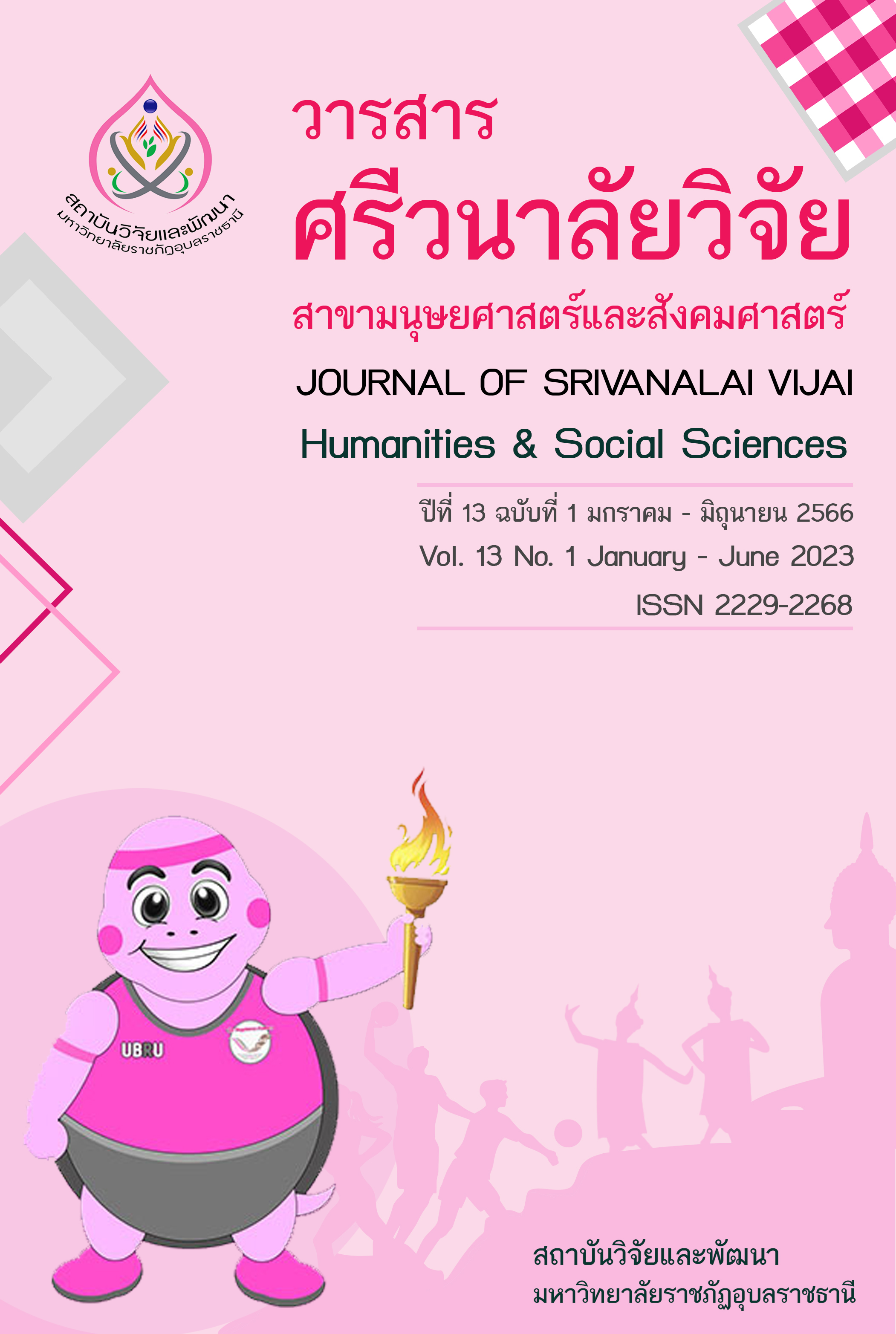แนวทางการพัฒนาผลิตภัณฑ์ถ่านอัดแท่งจากพื้นฐานของคุณค่าที่ส่งมอบให้ลูกค้า
Main Article Content
บทคัดย่อ
ถ่านอัดแท่ง คือเชื้อเพลิงประเภทหนึ่งซึ่งสร้างจากผงถ่านและส่วนประกอบอื่น ๆ นำมามาอัดให้เป็นแท่ง การวิจัยครั้งนี้มีวัตถุประสงค์ 1) เพื่อศึกษาคุณสมบัติของถ่านอัดแท่งสำหรับการปิ้งย่างที่ผู้บริโภครับรู้คุณค่าและ 2) เพื่อหาแนวทางการพัฒนาผลิตภัณฑ์ถ่านอัดแท่งสำหรับการปิ้งย่างจากพื้นฐานของคุณค่าที่ส่งมอบให้ลูกค้า ผู้วิจัยดำเนินการวิจัยเชิงคุณภาพโดยเก็บข้อมูลจากการสัมภาษณ์ผู้บริโภคจำนวน 20 คน เพื่อศึกษาคุณสมบัติของถ่านอัดแท่งที่ผู้บริโภครับรู้คุณค่า และดำเนินการวิจัยเชิงปริมาณ โดยการเก็บข้อมูลจากผู้บริโภค 474 คน ผลการวิจัยพบว่า 1) คุณสมบัติของถ่านอัดแท่งที่ผู้บริโภครับรู้คุณค่ามี 11 คุณสมบัติ คือ ติดไฟง่าย ไม่มีขี้เถ้า ไม่มีควัน ไม่มีกลิ่นเหม็น ไม่แตกตัว ให้ความร้อนสูง ให้ความร้อนนาน ไม่เลอะมือ มีขนาดพอเหมาะ ไม่มีสารพิษเจือปน และมีกลิ่นหอม 2) ผู้ผลิตควรพัฒนาถ่านอัดแท่งโดยมุ่งพัฒนาใน 4 ด้าน คือ ให้ความร้อนนาน ไม่แตกตัว มีกลิ่นหอม และไม่มีสารพิษเจือปน
Article Details
เอกสารอ้างอิง
เบญจมาภรณ์ วงษ์คำจันทร์ และฐิติมา รุ่งรัตนาอุบล. (2561). เชื้อเพลิงอัดแท่งจากเศษไม้พาเลท. วารสารวนศาสตร์, 37(1), 143-152.
ณัชธกาภรณ์ จรัญจารุพัฒน์ และสาลินี อาจารีย์. (2561). การผลิตแผ่นชิ้นไม้อัดจากเศษวัสดุเหลือใช้ทางการเกษตร.
วารสารวิชาการพระจอมเกล้าพระนครเหนือ, 28(2), 469-476.
ธนกร นิรันดร์นุต และรัฐไท พรเจริญ. (2559). การศึกษาออกแบบผลิตภัณฑ์จากเศษไม้เหลือใช้ในอุตสาหกรรมไม้
แปรรูปไม้เพื่อส่งเสริมงานตกแต่งทางสถาปัตยกรรม. วารสารวิชาการศิลปะสถาปัตยกรรมศาสตร์
มหาวิทยาลัยนเรศวร, 7(1), 1-14.
ปฐมศก วิไลพล, ปิยะนันท์ เจริญสวรรค์, นพรัตน์ สีหะวงษ์, จิรานุวัฒน์ เม่นเกิด, ปรากรณ์ ประกอบกสิกรณ์ และ
ปิยะวัต คำบุญ. (2562). การวิเคราะห์อัตราส่วนผสมสำหรับการผลิตเชื้อเพลิงถ่านอัดแท่งจากเศษถ่าน
ของกระบวนการเผาอิฐมอญ. วารสารวิศวกรรมศาสตร์ มหาวิทยาลัยเทคโนโลยีราชมงคลล้านนา, 4(1), 43-50.
พงศกร สุรินทร์, ชาญณรงค์ กันทะ, วรานนท์ มาวิเลิศ, ยุทธภูมิ ขันทะเขียว และมนินทรา ใจคำปัน. (2564). การผลิตถ่านอัดแท่งจากเศษหน่อไม้เหลือทิ้ง. วารสารวิจัยและนวัตกรรมการอาชีวศึกษา, 5(2). 13-20.
ภานุมาศ พรมชาติ และวิโรจน์ เจษฎาลักษณ์. (2560). การวิเคราะห์สภาพแวดล้อมและกลยุทธ์การสร้างความได้เปรียบทางการแข่งขันในธุรกิจเชื้อเพลิงอัดแท่งจากถ่านกะลามะพร้าวและถ่านไม้ยางพาราของ บริษัท
ดำเนินคาร์บอน จำกัด จังหวัดราชบุรี. วารสารมนุษยศาสตร์ สังคมศาสตร์ และศิลปะ, 10(2), 709-734.
รักษ์ ผิวนิ่ม และสิทธิพร พิมพ์สกุล. (2554). การศึกษาความเป็นไปได้ในการตั้งโรงงานผลิตถ่านกะลามะพร้าวอัดแท่งในจังหวัดประจวบคีรีขันธ์. วารสารวิศวสารลาดกระบัง, 28(1), 49-54.
วัชรานนท์ จุฑาจันทร์. (2562). การศึกษากระบวนการเผาถ่านและสมบัติของถ่านอัดแท่งจากหญ้าแฝก. วารสาร
เทคโนโลยีอุตสาหกรรม มหาวิทยาลัยราชภัฏอุบลราชธานี, 9(2), 135–146.
วิชัย โชควิวัฒน. (2560). จริยธรรมการวิจัยในมนุษย์. กรุงเทพฯ : สามดีพริ้นติ้ง อีควิปเมนท์.
สิริชัย จิรวงศ์นุสรณ์ และจังหวัด เจริญสุข. (2565). การศึกษาทำถ่านอัดแท่งจากเปลือกส้มโอ. วารสารวิศวกรรมสารเกษมบัณฑิต, 12(1). 55-74.
อานันต์ วาชัยสี, คุณภัทร ศรีเปารยะ, วิมล พรหมแช่ม, พีรพงศ์ หนูช่วย, สุจิตรา แสงชัยศรี, กิตติคุณ เซียวสกุล, อภิชาติ หาจัตุรัส และ ชิโนรส ละอองวรรณ, กระบวนการผลิตถ่านอัดแท่งจากเศษถ่านเหลือ
ใช้ในโรงงานอุตสาหกรรม. วารสารวิชาการวิทยาศาสตร์มหาวิทยาลัยราชภัฏจันทรเกษม. 32(2), 87-94.
Barnes, C., Blake. H., & Pinder, D. (2009). Creating & delivering your value proposition. London: Kogan Page.
Cronbach, L. J. (1990). Essentials of psychological testing (5th ed.). New York: Harper CollinsPublishers.
DePaulo, P. (2000). Sample size for qualitative research. Retrieved from
http://www.quirks.com/articles/a2000/20001202.aspx?searchID=38577919
Ho, R. (2006). Handbook of univariate and multivariate data analysis and interpretation with SPSS. Florida: CRC Press.
Jordan, Y. (2022). How to Make Charcoal Briquettes. Retrieved from FTM website.
https://www.ftmmachinery.com/blog/composition-and-processing-of-charcoal-
briquette.html
Osterwalder, A & Pigneur, Y. (2010). Business model generation. New York: John Wiley & Sons.
Osterwalder, A, Pigneur, Y., Bernarda, G., & Smith, A. (2014). Value proposition design. New York:
John Wiley & Sons.
Richie, J., Lewis, J., & Elam, G. (2003). Designing and selecting samples. In Ritchie, J., and Lewis, J. (Eds.), Qualitative Research Practice: A Guide for Social Science Students and Researchers. (pp. 77-108). London, UK: Sage.


